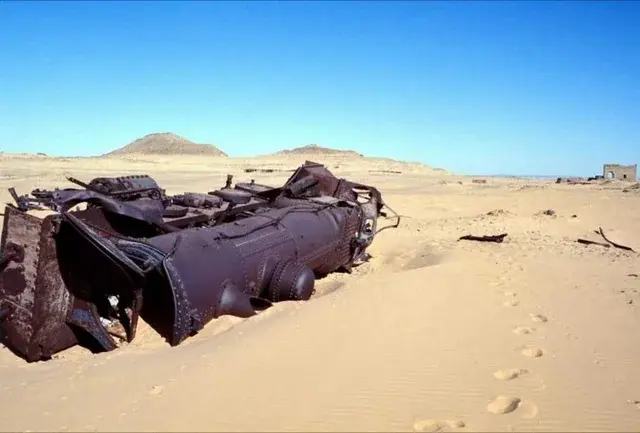T.E Lawrence, Was He Just 'The Dynamite Guy'?
- Daniel Holland

- Aug 16, 2019
- 5 min read

When the Imperial Camel Corps thundered into the dusty port town of Aqaba in the summer of 1918, they rode not only into a British-controlled camp but also into an awkward tangle of cultural misreadings. Aqaba, now Jordan’s southernmost city, had fallen to a bold offensive involving Arab irregulars and a handful of audacious British officers. Yet for all the talk of brotherhood in arms, the alliance between Bedouin tribes and the British Empire remained an uneasy truce at best.
That day, excited Bedouin tribesmen greeted the Camel Corps with musket fire and exuberant cries. Many troopers, unfamiliar with local customs, mistook the salute for an attack and nearly retaliated with grenades. Calm arrived in an almost cinematic gesture: a lone figure in white robes stepped into the fray, raised his hand to the glow of the campfires, and silenced the gunfire at once. That man was Thomas Edward Lawrence, the future Lawrence of Arabia.
Such anecdotes form the bedrock of Lawrence’s legend: a British intelligence officer turned guerrilla tactician, who fought alongside the Arab Revolt against the Ottoman Empire and then immortalised himself in Seven Pillars of Wisdom, later brought to the big screen by David Lean’s iconic 1962 film starring Peter O’Toole. Yet the real Lawrence, the impact of his exploits, and the place he holds in collective memory are far more complex, and far more contested, than cinematic myth suggests.
From Oxford Scholar to Desert Campaigner
Born in 1888 to an Anglo-Irish father and a Scottish mother, Lawrence’s early life gave few hints of future notoriety. Slight of build, shy, and academically gifted, he read modern history at Jesus College, Oxford, before turning to archaeology in the Middle East. By the outbreak of the First World War, his encyclopaedic knowledge of Arab culture and geography made him an asset to British intelligence in Cairo.

As the Ottoman Empire faltered, Britain backed an Arab uprising, promising an independent Arab state in return. Lawrence’s role in rallying Arab tribal leaders, sabotaging Ottoman supply lines, and waging a hit-and-run desert campaign remains a remarkable study in guerrilla warfare. His personal conflict, however, was profound: he knew of the secret Sykes-Picot Agreement — the British and French plan to divide the Middle East — which undercut promises made to the Arab leaders he fought beside.
This sense of betrayal haunted him. He attempted, unsuccessfully, to sway Allied leaders at the Paris Peace Conference in 1919, arguing that Arab self-determination should not be sacrificed on the altar of European colonial convenience. When those arguments failed, he withdrew into semi-obscurity — an icon of a failed promise.
Lawrence’s Split Legacy: Revered Saint or Imperial Agent?
In Britain, Lawrence’s status was cemented early. The American journalist Lowell Thomas’s travelling lecture show, With Allenby in Palestine and Lawrence in Arabia, thrilled audiences long before Lean’s sweeping desert panoramas. He emerged as Britain’s sole romantic hero of the Great War — an era defined more by slaughter than by individual gallantry.
Michael Asher, an explorer and Arabist, describes visiting Lawrence’s Dorset cottage, Clouds Hill:
“It felt like a church. He’s almost a secular saint in Britain, the single heroic figure from a war that destroyed a generation.”
Yet within the Arab world, Lawrence’s legacy is far more ambivalent. Early Arab writers saw him as a passionate Orientalist who embraced their cause. But post-1948, with the creation of Israel and the enduring shadow of the Balfour Declaration, Arab historians have re-evaluated his role. Syrian historian Sami Moubayed notes, “He was seen as a phenomenon, but now many see only a British agent advancing imperial goals.”
When a television series about Lawrence aired in the Arab world during Ramadan, starring Syrian actor Jihad Saad, it flopped. Modern audiences, Moubayed suggests, had little interest in a figure they felt no longer spoke to their history. The memory of a foreign adventurer, cloaked in Bedouin robes, sits uneasily in a region where colonial borders still dictate contemporary conflicts.

Wadi Rum and the Ghost of Lawrence
Today, Lawrence’s name lingers in Jordan’s Wadi Rum, where he and his Bedouin allies once planned sabotage raids on the Hejaz Railway. Tour guides point to “Lawrence’s Well”, a site built for Lean’s film rather than by Lawrence himself, an emblem of how myth and history blur in the desert sun. Locals often remember Peter O’Toole more vividly than the real man behind the legend.
Michael Asher, who spent time with the Howaytat tribe whose ancestors fought with Lawrence, recalls:
“They didn’t know much about him. Some thought he was just a demolitions expert brought in to blow up the railway. The myth is mostly a Western construct.”
The Guerrilla’s Handbook and the Special Forces Blueprint
Lawrence’s influence on military theory, however, remains potent. His belief that a lightly armed, highly mobile force could outwit a conventional army inspired generations of guerrilla tacticians. The British Special Air Service (SAS), founded during the Second World War, borrowed directly from Lawrence’s principles: strike behind enemy lines, sabotage supply routes, then vanish before retaliation comes.

Decades later, as the United States grappled with insurgencies in Iraq and Afghanistan, Lawrence’s writings resurfaced in military academies. American commanders, including General David Petraeus, cited Seven Pillars of Wisdom when drafting counter-insurgency doctrines, hoping to learn from the desert campaigns of 1916–18.
Yet as historian James Barr cautions, Lawrence’s memoir is as much an elegy for lost Arab hopes as a manual for modern warfare: “It shows how hard it is for a conventional army to defeat guerrillas. There’s no guarantee his tactics can win you a war.”
Enter Gertrude Bell: The Maker of Iraq
Overshadowed by Lawrence’s enduring myth is the equally consequential figure of Gertrude Bell. Born into a wealthy industrial family in County Durham in 1868, Bell matched Lawrence in intellect and far exceeded him in political influence. An Oxford graduate and prolific traveller, she mapped deserts, learned Arabic, and immersed herself in tribal politics long before Britain’s Arab Bureau ever took shape.

Bell and Lawrence crossed paths on excavation sites and worked side by side for British intelligence in Cairo during the war. They clashed over how Britain should manage its new Middle Eastern mandates, but both were pivotal in shaping Iraq’s early borders and monarchy. Bell served as adviser to King Faisal and vetted tribal leaders for government posts — a thankless task she described candidly: “I’ll never engage in creating kings again; it’s too great a strain.”
In 1926, exhausted and disillusioned, Bell died of an overdose in Baghdad — by accident or intent remains unclear. Lawrence, learning of her passing, wrote with characteristic melancholy: “That Irak state is a fine monument; even if it only lasts a few more years. It seems such a very doubtful benefit — government — to give a people who have long done without.”
A Myth Still Riding the Desert Wind
Both Lawrence and Bell shaped the modern Middle East in ways neither could have foreseen. Lawrence died in 1935, the victim of a motorcycle accident that ended a life already marked by retreat and self-doubt. He once confessed, “I’m a fraud as regards the Middle East,” hinting at his uneasy place between hero and unwitting imperial pawn.
Today, as old promises and broken borders continue to define regional strife, their shadows loom large. In Britain, Lawrence remains the gallant desert knight. In the Arab world, his ghost drifts more faintly — a reminder of foreign intrigue cloaked in flowing robes. The cinema may keep his legend alive, but in Aqaba’s windswept streets and Wadi Rum’s rose-red sands, it is harder to find the real Lawrence of Arabia than the film reel version.
Sources:
Seven Pillars of Wisdom, T. E. Lawrence
Michael Asher, Lawrence: The Uncrowned King of Arabia
James Barr, Setting the Desert on Fire: T. E. Lawrence and Britain’s Secret War in Arabia, 1916–18
Sami Moubayed, Forward Magazine










































































































Comments